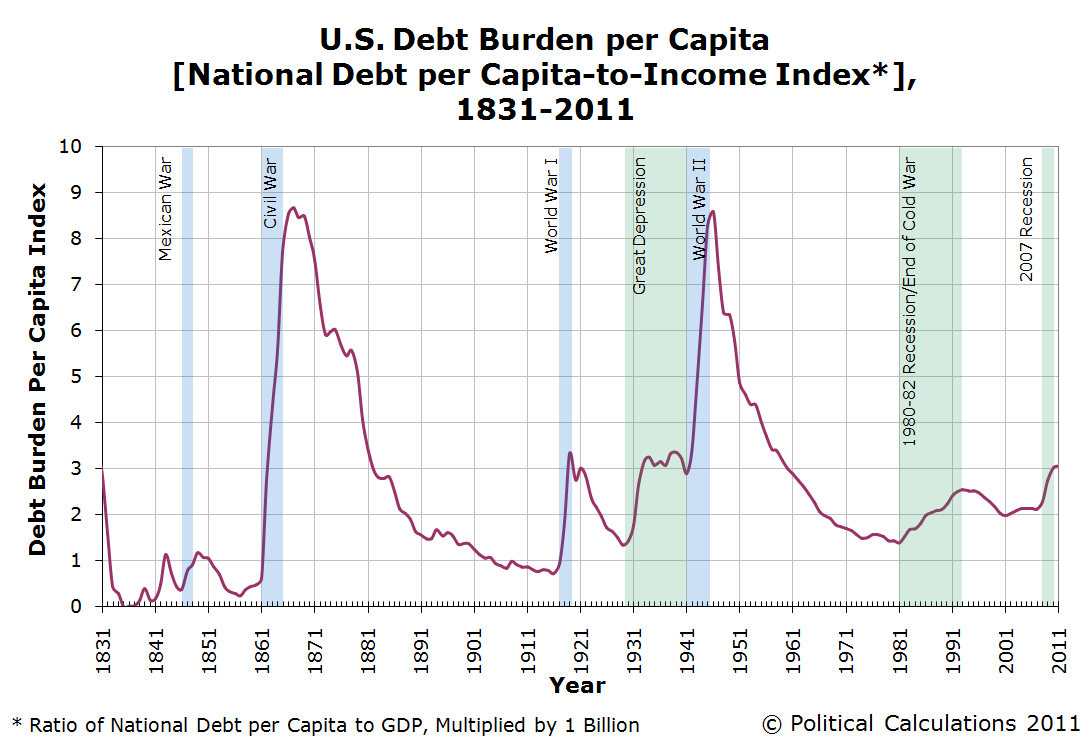In 1831, the National Debt Burden per Capita, or rather the ratio of the United States' national debt per capita and GDP, multiplied by 1 billion), dropped below a value of 3 for the first time in its history [1]. In 2011, the U.S.' National Debt Burden per Capita has risen above that level.
Let's look at what happened to the U.S.' National Debt Burden per Capita in between, shall we?

Wars and depressions largely characterize the periods of time where there have been significant run-ups in the level of the U.S. National Debt Burden per Capita, with the debt taken on to support the costs of the U.S. Civil War and World War II being the most significant.
In looking at today's level of the National Debt Burden per Capita, we see that it is perhaps most comparable to the Great Depression.
Throughout all this time, we'll note that the National Debt Burden per Capita has only fallen when the United States government curtailed its elevated level of spending. Typically, that has been solely the result of spending cuts following periods of conflict, rather than tax increases [2].
Political Calculations' The U.S. Economy at Your Fingertips tool puts all this data, and more, at your fingertips, covering the period from 1791 through 2010 (at this writing)!
Notes
[1] Prior to 1831, the national debt burden per capita was considerably higher, thanks largely to the debt taken on by the new nation to pay for the costs of the Revolutionary War and the War of 1812.
[2] Before 1913, there was no income tax in the United States, yet the federal government in those days succeeded in lowering the National Debt Burden per Capita by controlling its spending. That may be a lesson that today's politicians can well afford to learn.
Labels: national debt
Welcome to the blogosphere's toolchest! Here, unlike other blogs dedicated to analyzing current events, we create easy-to-use, simple tools to do the math related to them so you can get in on the action too! If you would like to learn more about these tools, or if you would like to contribute ideas to develop for this blog, please e-mail us at:
ironman at politicalcalculations
Thanks in advance!
Closing values for previous trading day.
This site is primarily powered by:
CSS Validation
RSS Site Feed
JavaScript
The tools on this site are built using JavaScript. If you would like to learn more, one of the best free resources on the web is available at W3Schools.com.